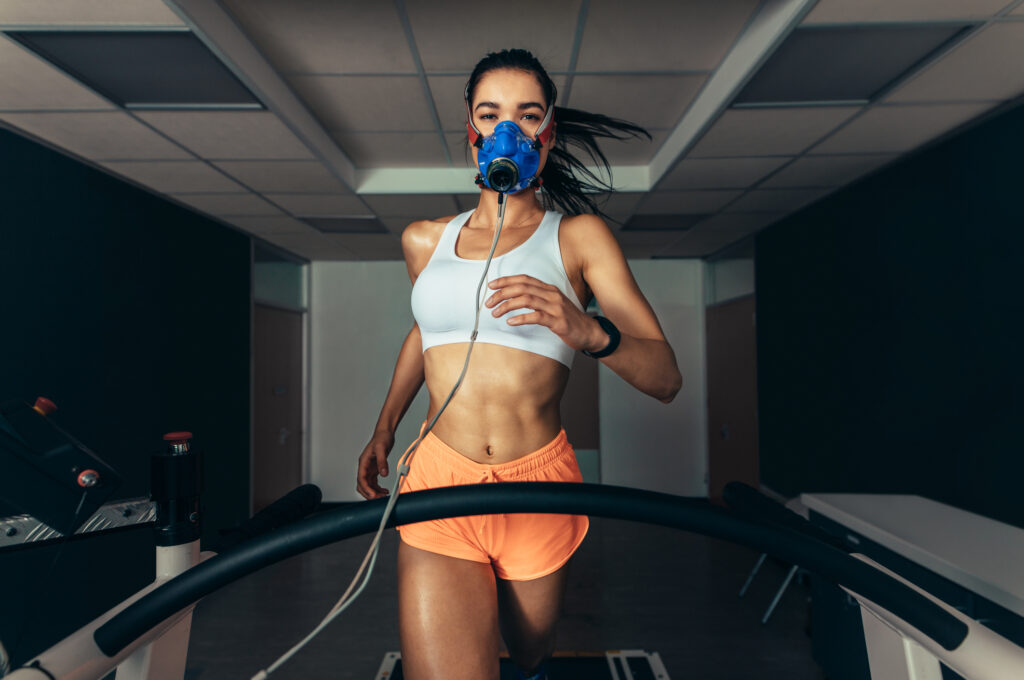
Whether your new to running, returning to running, or are an avid runner, measuring and tracking aerobic fitness and endurance is important. While a professional VO2 Max test is the most accurate, I found some effective and simple at home tests used by many professionals to assess and track performance.
Cardiovascular health can be measured either by a professional or by using simple at home tests. Aerobic and endurance performance is one of the four main types of exercise used to evaluate overall fitness. Cardiovascular health is an important metric that both new and experienced runners can be tracking for getting and staying in good shape.
No single test can determine your fitness level, however there are several tests used by professionals to help assess aerobic and endurance health. Below are some different at home tests that can done to assess and track your progress. Be sure to warm up for 5 -15 minutes before starting the test. Immediately after each test record your heart rate by using a heart rate monitor or taking your own pulse as another metric of cardio fitness.
12 Minute Cooper Test

This test was designed in 1968 and used exclusively by the US Army to measure performance. This test is both effective and easy to use making it a popular test to measure and track aerobic and endurance health. A Means of Assessing Maximal Oxygen Intake: Correlation Between Field and Treadmill Testing | JAMA | JAMA Network
This test can be performed anywhere you can walk or run safely for 12 minutes on a flat and smooth surface. Any time can be used, and most can simply use a running app to track both time and distance (see my article here for my top free favorite running apps).
To perform the test, run or walk as fast as you can for 12 minutes on a flat surface such as a track or other suitable area. The goal is to see how much distance you can cover in the 12 minutes and should be done at the fastest speed you can sustain for the entire 12 minutes.
This is a good test not only of your cardio health, but you can use the formula below to estimate your VO2 Max results. This test can be performed either once or twice a month or even every other month to track performance improvements.
KM: VO2max = (22.351 x Km) – 11.288
Miles: VO2max = (36.97 x miles) – 11.29
You can use the chart below for initial assessment of how you compare to others of similar age and gender
| Age | Excellent | Above Average | Average | Below Average | Poor |
| Male 20-29 | over 2800 meters | 2400-2800 meters | 2200-2399 meters | 1600-2199 meters | under 1600 meters |
| Females 20-29 | over 2700 meters | 2200-2700 meters | 1800-2199 meters | 1500-1799 meters | under 1500 meters |
| Males 30-39 | over 2700 meters | 2300-2700 meters | 1900-2299 meters | 1500-1999 meters | under 1500 meters |
| Females 30-39 | over 2500 meters | 2000-2500 meters | 1700-1999 meters | 1400-1699 meters | under 1400 meters |
| Males 40-49 | over 2500 meters | 2100-2500 meters | 1700-2099 meters | 1400-1699 meters | under 1400 meters |
| Females 40-49 | over 2300 meters | 1900-2300 meters | 1500-1899 meters | 1200-1499 meters | under 1200 meters |
| Males 50 | over 2400 meters | 2000-2400 meters | 1600-1999 meters | 1300-1599 meters | under 1300 meters |
| Females 50 | over 2200 meters | 1700-2200 meters | 1400-1699 meters | 1100-1399 meters | under 1100 meters |
1 1/2 Mile Test
Another popular test of aerobic health is the 1 ½mile test which is similar to the test above. This test is used by the Airforce as one of three basic tests of physical performance and endurance.
Rather than running for a set time, you run for the set distance of 1 ½ miles. The minimum standard for graduating basic military training is 11:57 min for males and 13:56 for females. The below chart provides a benchmark of good fitness based on age.
| Age | Women: Time in minutes | Men: Time in minutes |
| 25 | 13 | 11 |
| 35 | 13.5 | 11.5 |
| 45 | 14 | 12 |
| 55 | 16 | 13 |
| 65 | 17.5 | 14 |
Rockport 1 Mile Walking Test
This test was developed in 1986 by physiologists and cardiologists to evaluate cardiovascular fitness. This is a simple and safe way to measure the capacity of the lungs in relation to the volume of exercise you can tolerate (VO2 max). This test is designed for people ages 20 to 69.
This test is good for ones who are out of shape, have physical limitations, or returning from injury or illness. This test is the safest of the ones outlined here to establish a baseline for new or returning runners.
It is recommended to not go 100% out the first time, but to start with a low-intensity for the first few sessions and gradually intensify the effort. Like the tests above, it should be performed in a safe area with a smooth and flat surface such as a track.
To perform the test, walk as fast you can for 1 mile and record your time in decimals (seconds / 60). You may also want to take your pulse immediately afterwards and record your beats per minute (bpm).
The below formula is used to calculate your estimated VO2 Max which requires both your ending heart rate, your time in decimals, and your weight in pounds.
VO2max = 132.853 – (0.0769 x your weight in pounds) – (0.3877 x your age) + (6.315 if you are male or 0 for females) – (3.2649 x your walking time) – (0.1565 x your heart rate at end of the test).
You can use the chart below for initial assessment of how you compare to others of similar age and gender.
| Rockport 1 Mile Walking Test | ||||||
| VO2 Max Norms | ||||||
| VO2 Max Norms for Women Age | Very Poor | Poor | Fair | Good | Excellent | Superior |
| 13-19 | Under 25.0 | 25.0-30.9 | 31.0-34.9 | 35.0-38.9 | 39.0-41.9 | Over 41.9 |
| 20-29 | Under 23.6 | 23.6-28.9 | 29.0-32.9 | 33.0-36.9 | 37.0-41.0 | Over 41.0 |
| 30-39 | Under 22.8 | 22.8-26.9 | 27.0-31.4 | 31.5-35.6 | 35.7-40.0 | Over 40.0 |
| 40-49 | Under 21.0 | 21.0-24.4 | 24.5-28.9 | 29.0-32.8 | 32.9-36.9 | Over 36.9 |
| 50-59 | Under 20.2 | 20.2-22.7 | 22.8-26.9 | 27.0-31.4 | 31.5-35.7 | Over 35.7 |
| 60+ | Under 17.5 | 17.5-20.1 | 20.2-24.4 | 24.5-30.2 | 30.3-31.4 | Over 31.4 |
| VO2 Max Norms for Men Age | Very Poor | Poor | Fair | Good | Excellent | Superior |
| 13-19 | Under 35.0 | 35.0-38.3 | 38.4-45.1 | 45.2-50.9 | 51.0-55.9 | Over 55.9 |
| 20-29 | Under 33.0 | 33.0-36.4 | 36.5-42.4 | 42.5-46.4 | 46.5-52.4 | Over 52.4 |
| 30-39 | Under 31.5 | 31.5-35.4 | 35.5-40.9 | 41.0-44.9 | 45.0-49.4 | Over 49.4 |
| 40-49 | Under 30.2 | 30.2-33.5 | 33.6-38.9 | 39.0-43.7 | 43.8-48.0 | Over 48.0 |
| 50-59 | Under 26.1 | 26.1-30.9 | 31.0-35.7 | 35.8-40.9 | 41.0-45.3 | Over 45.3 |
| 60+ | Under 20.5 | 20.5-26.0 | 26.1-32.2 | 32.3-36.4 | 36.5-44.2 | Over 44.2 |
Key Takeaways
Tracking aerobic fitness and endurance can be a great way to stay motivated as you train week over week. Many experts recommend performing a test every 4- 6 weeks as running at top speed does put one at greater risk of injury. For more on how long it will take to get in shape see my article here.
It is best to perform each of the tests at the same time of day and under as similar conditions as possible. While you may not see improvements each time you take a test due to factors including temperature, humidity, or stress levels, you will likely see gradual improvements if you are sticking with a balanced running plan. For tips and tricks for running your fastest see my article here.
| Test(Rockport, 12min, etc) | Initial Assessment | Test 2 | Test 3 | Test 4 | Test 5 |
| Date | |||||
| Time/Distance/Pace | |||||
| Heart Rate | |||||
| Other (VO2Max, perceived effort, etc) |